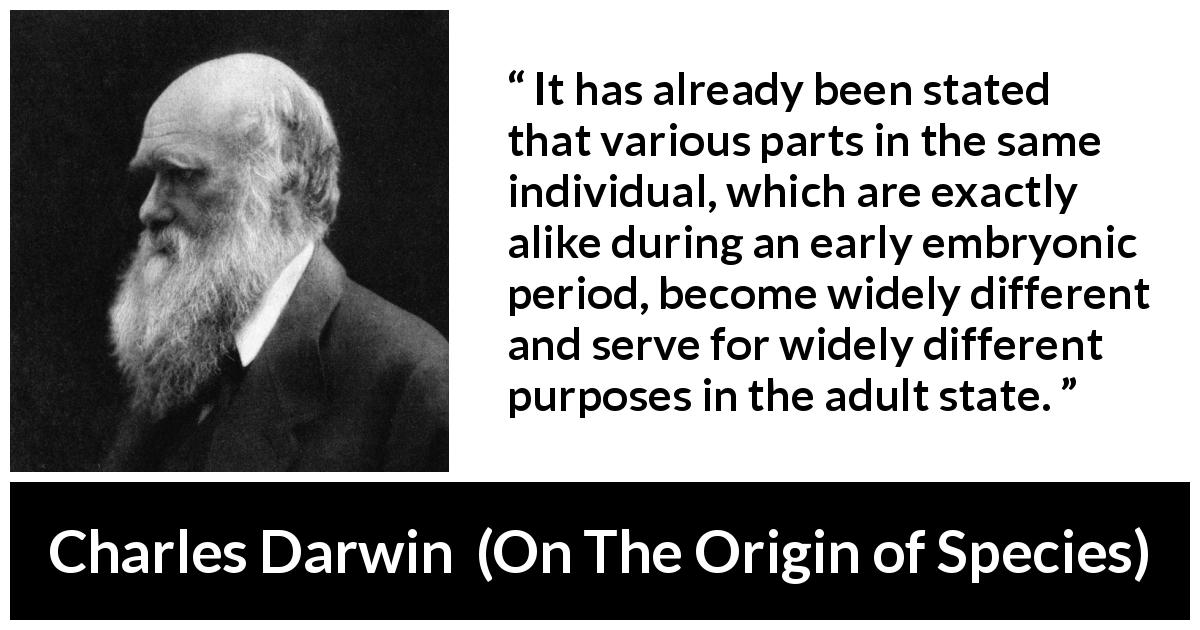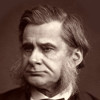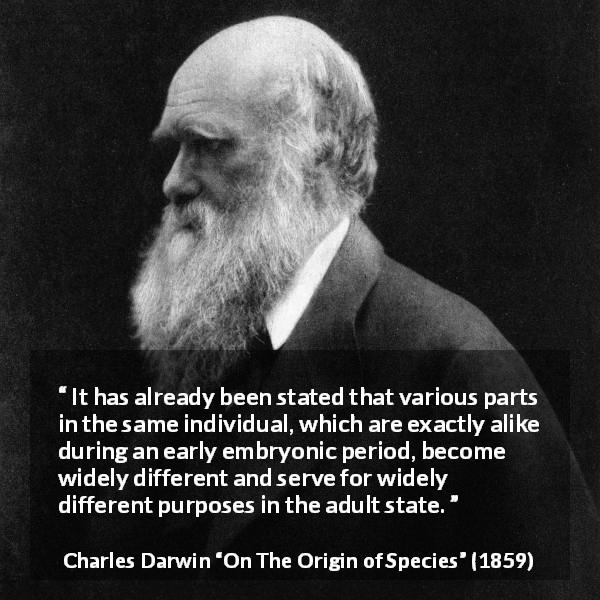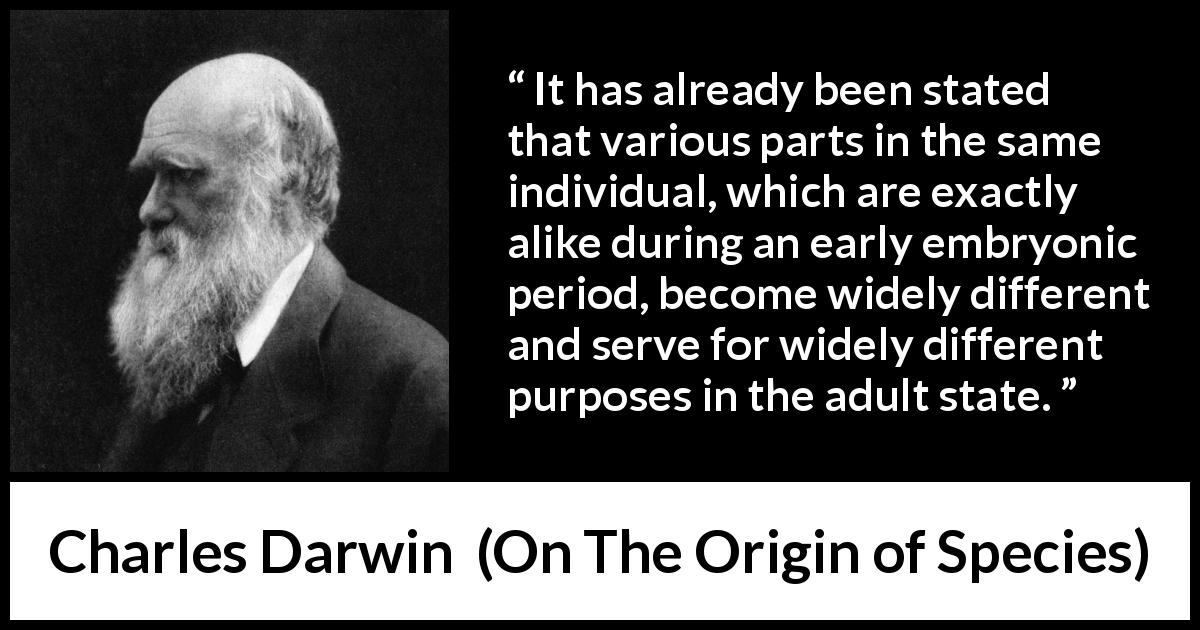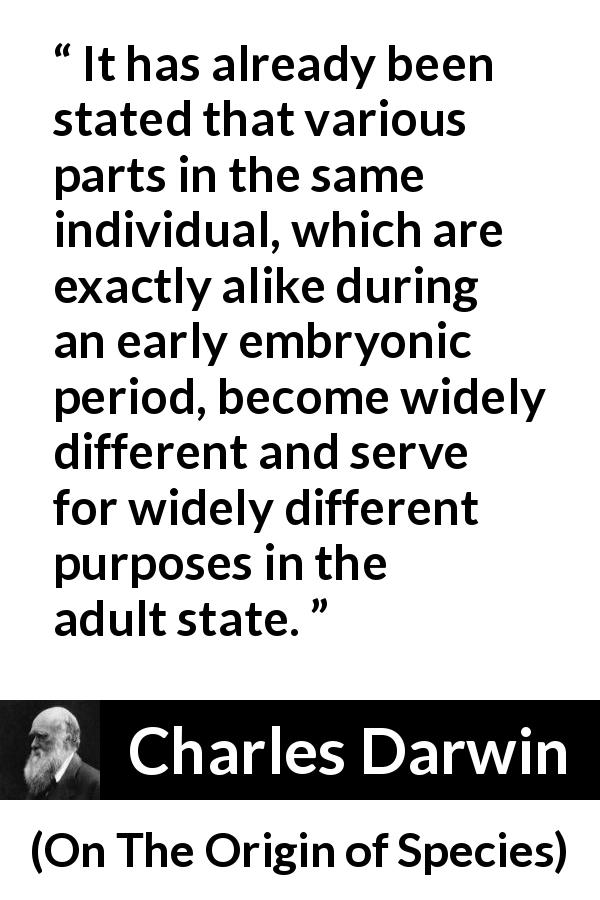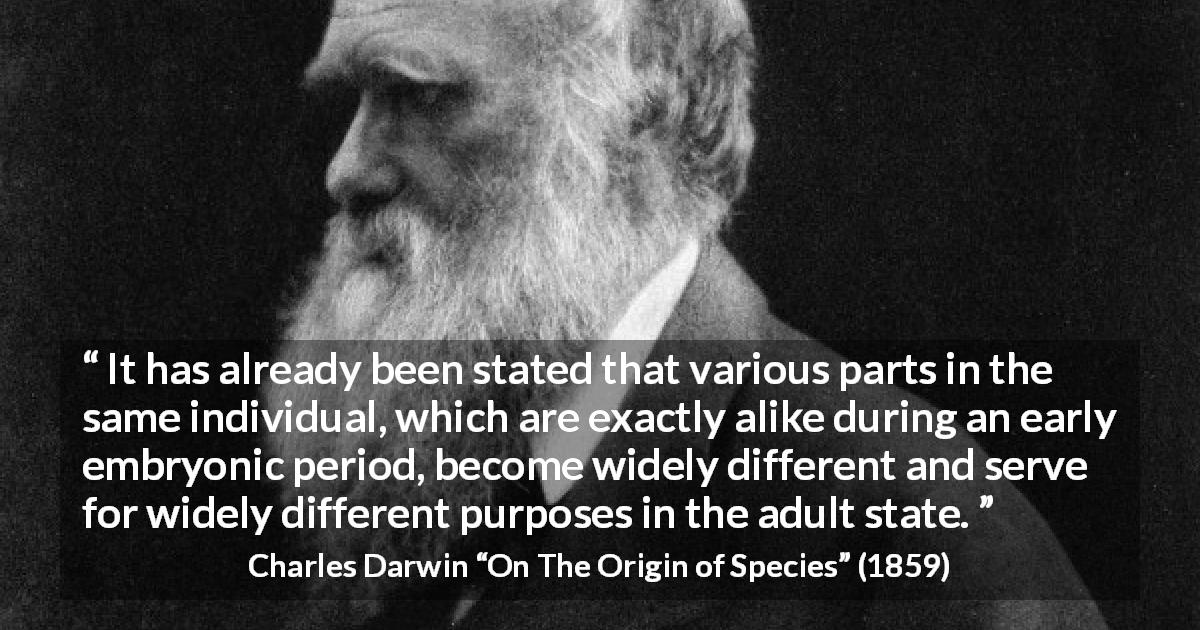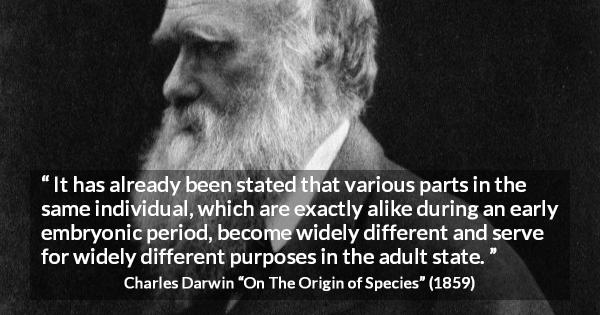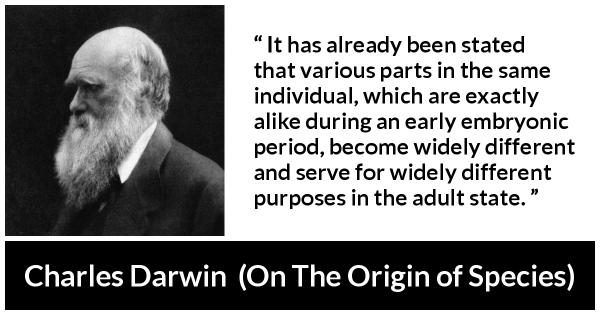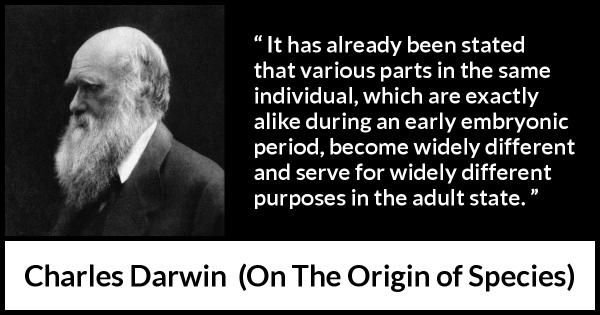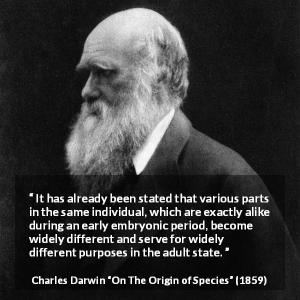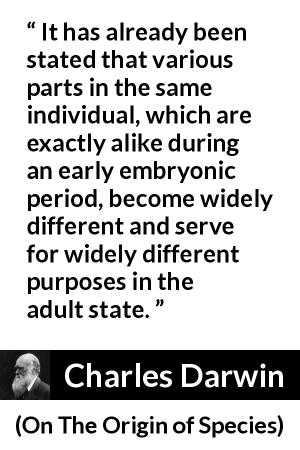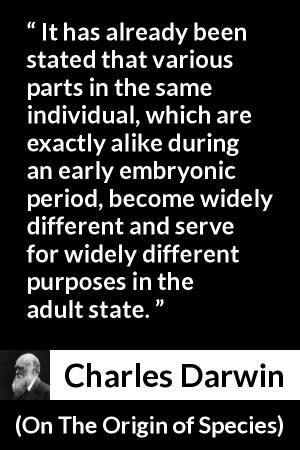“ It has already been stated that various parts in the same individual, which are exactly alike during an early embryonic period, become widely different and serve for widely different purposes in the adult state. ”
Charles Darwin, On The Origin of Species (1859). copy citation
| Author | Charles Darwin |
|---|---|
| Source | On The Origin of Species |
| Topic | adult embryo organic |
| Date | 1859 |
| Language | English |
| Reference | |
| Note | |
| Weblink | http://www.gutenberg.org/files/2009/2009-h/2009-h.htm |
Context
“Certain animals belonging to several classes are now known to have the power of ordinary reproduction at an unusually early age; and we have only to accelerate parthenogenetic reproduction by gradual steps to an earlier and earlier age—Chironomus showing us an almost exactly intermediate stage, viz., that of the pupa—and we can perhaps account for the marvellous case of the Cecidomyia.
It has already been stated that various parts in the same individual, which are exactly alike during an early embryonic period, become widely different and serve for widely different purposes in the adult state. So again it has been shown that generally the embryos of the most distinct species belonging to the same class are closely similar, but become, when fully developed, widely dissimilar. A better proof of this latter fact cannot be given than the statement by Von Baer that "the embryos of mammalia, of birds, lizards and snakes, probably also of chelonia, are in the earliest states exceedingly like one another, both as a whole and in the mode of development of their parts; so much so, in fact, that we can often distinguish the embryos only by their size.” source
It has already been stated that various parts in the same individual, which are exactly alike during an early embryonic period, become widely different and serve for widely different purposes in the adult state. So again it has been shown that generally the embryos of the most distinct species belonging to the same class are closely similar, but become, when fully developed, widely dissimilar. A better proof of this latter fact cannot be given than the statement by Von Baer that "the embryos of mammalia, of birds, lizards and snakes, probably also of chelonia, are in the earliest states exceedingly like one another, both as a whole and in the mode of development of their parts; so much so, in fact, that we can often distinguish the embryos only by their size.” source
